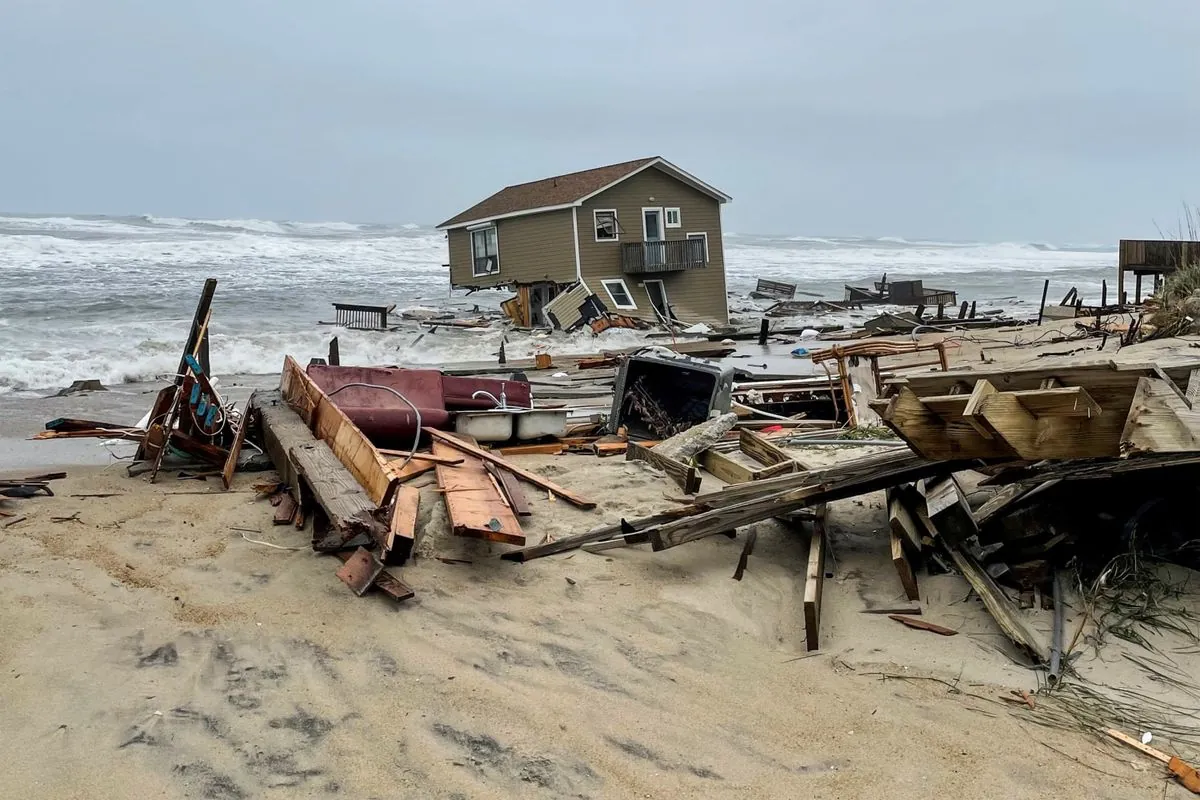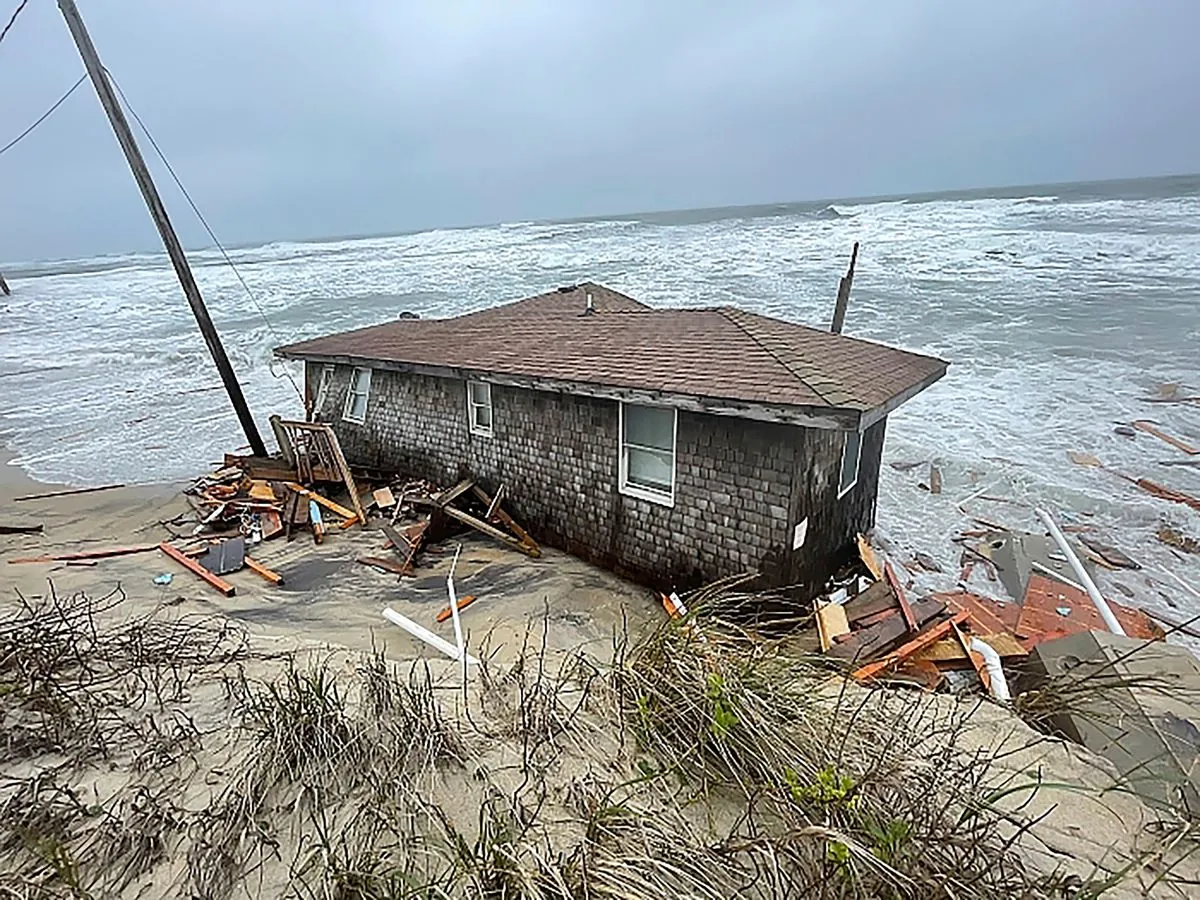Two Vacant Beach Houses Collapse into Sea off North Carolina Coast
In Rodanthe, North Carolina, two unoccupied beach houses on stilts fell into the ocean due to coastal erosion. This marks the ninth such incident in the area over the past four years, highlighting ongoing environmental challenges.

In a stark illustration of the ongoing battle against coastal erosion, two vacant beach houses in Rodanthe, North Carolina, recently succumbed to the relentless forces of nature. The structures, built on stilts along the shoreline, collapsed into the sea, marking the latest in a series of similar incidents in the area.
The first house fell, causing significant structural damage to its neighbor, which followed suit several hours later. Both properties were unoccupied and had been slated for demolition prior to their unexpected demise. This event brings the total number of such collapses in Rodanthe to nine over the past four years, with four occurring in 2024 alone.
The Cape Hatteras National Seashore, a 70-mile stretch of coastline managed by the park service, issued a warning to visitors, urging them to avoid nearby beaches due to the presence of hazardous debris, including nail-ridden wooden fragments.

Experts attribute these collapses to a combination of environmental factors, including winds, waves, tides, rising sea levels, and intense storms. These elements contribute to the erosion of sand around the stilts supporting the houses, increasing the risk of structural failure.
The situation in Rodanthe is part of a larger pattern affecting the Outer Banks, a string of barrier islands known for their shifting sands and erosion-prone beaches. The area has a rich history, including being home to the Wright Brothers National Memorial and the site of the Lost Colony of Roanoke Island, one of America's oldest unsolved mysteries.
Climate change and sea-level rise are accelerating erosion rates in the Outer Banks, posing challenges for both human habitation and wildlife. The region is home to several endangered species, including sea turtles and piping plovers, whose habitats are under threat.
The Cape Hatteras National Seashore, established in 1937 as the first national seashore in the United States, attracts over 2 million visitors annually. Park officials are working on various erosion mitigation strategies to protect the coastline and preserve this unique ecosystem.
As the Outer Banks continue to face environmental challenges, the recent house collapses in Rodanthe serve as a poignant reminder of the delicate balance between human development and the power of nature. The area's future will likely depend on innovative solutions and careful management to preserve its natural beauty and historical significance for generations to come.


































